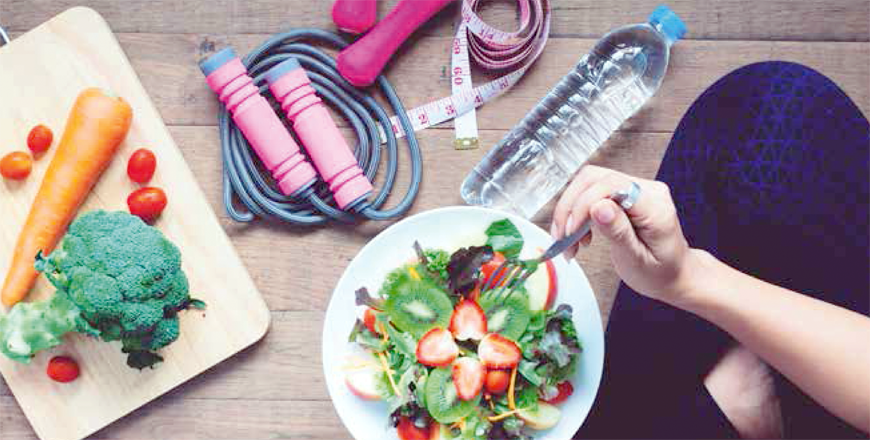Research from the Journal of Consumer Psychology reveals an interesting concept called the “Dieter’s Paradox”.
It turns out that many people on diets believe adding
a healthy food choice — like a side salad —to an unhealthy meal, like pizza, helps them consume fewer calories overall.
But here’s the surprising truth: Combining healthy and unhealthy foods can actually lead to eating more calories than you realise! This can contribute to weight gain rather than weight loss.
So, next time you’re balancing a meal, remember: Simply adding something healthy doesn’t make the whole meal lighter on calories.
Falling victim to a myth
I’ve fallen victim to this mentality myself.
How many times have I added a veggie and a salad to my already loaded plate thinking the extra fiber will surely cancel some calories? It somehow makes us feel better to consume healthier options as an afterthought to alleviate some of our guilt.
However, this can lead us to consume more calories overall. That’s why it’s wise to start with your veggies first!
The order of things
The order in which we eat our food items makes a difference.
Make it a habit to eat the veggies on your plate first, followed by your protein and whole grains.
You’re more likely to be too full for desert and junky carbs if the healthy choices precede them.
Another helpful tip to keep you from underestimating your calories is to put everything you eat on one plate.
This makes it easier to visualise what you plan to consume.
How quickly we forget what we ate just a few minutes ago — especially if we’re snacking at various times throughout the day!
Non-negotiable
It’s easier to monitor the quantity and quality of our food if we limit our food consumption to designated mealtimes only.
Don’t forget to make it a non-negotiable rule to avoid second portions no matter how tasty the food is.
This even includes second portions of any “healthy” selection.
Too much of a good thing is too much! Remember your Tetah’s rule: “Everything in moderation!” This is the kind of balance we should aim for.
It’s the most realistic and sustainable strategy we can follow on a long-term basis.
After all, true well-being comes from lifestyle changes we can stick with for the long term!
Food on my plate
Permit yourself not to finish your whole plate once you feel satisfied. This takes practice because we all grew up in the “clean your whole plate” era.
Our parents told us not to get up from the table ‘till we finished every morsel on our plates.
I remember being told that there were starving people in the world so I should be grateful I had food on my plate.
It’s easy to feel as if eating everything on our plate could somehow help those who are less fortunate.
Of course, we should be grateful for the food and blessings we have.
But once we’re satisfied, there’s no harm in saving the leftovers!
I know couples who split one entré when they eat at a specific restaurant because they know that portions are way too large for one person there.
The bottom line is this: Do we eat to live or live to eat? If we live to eat it will become very apparent in the way we plan our days and meals.
Are we waking up in the morning obsessing about what to eat, or are we engaging our minds in other life matters? We can tell where our day is headed by monitoring our thoughts.
Granted there are some days that are easier than others depending on hormones and stress levels that contribute to emotional eating.
The challenge is to reign in those outside factors and remind ourselves that we do have more control than we realise.
Setting emotions aside
Focusing on what’s on our plate is a simple way to avoid underestimating our total calorie intake.
By setting emotions aside and doing the maths, we can approach our eating habits from a practical, scientific perspective.
Knowing what we’re putting on our plates — and where it comes from — empowers us to make informed choices.
Instead of relying on advertisements that claim to knowwhat’s best for us, we can tune in to our own bodies, which never lie.
Knowing what we’re putting on our plates…empowers us to make informed choices Each of us is unique in how we process foods and by listening to our own bodies, we can learn what works best for us.
When we trust that process, we begin to appreciate and care for ourselves enough to make positive, lasting changes.
Fellow desperate dieter, you are not alone.
Here’s to making better choices one day at a time, one plate at a time.
Reprinted with permission from Family Flavours magazine

